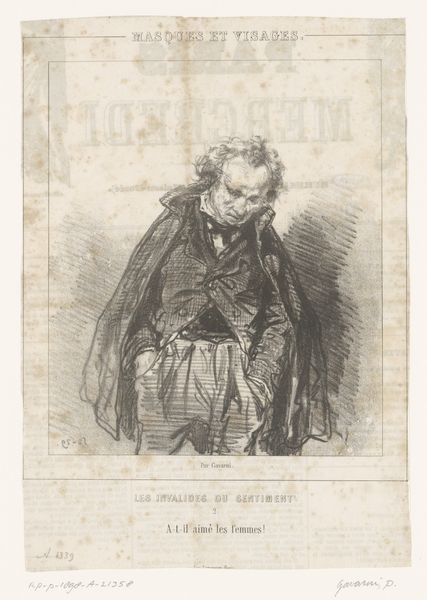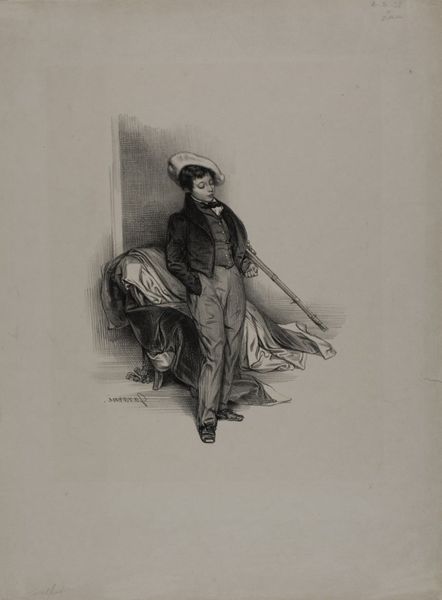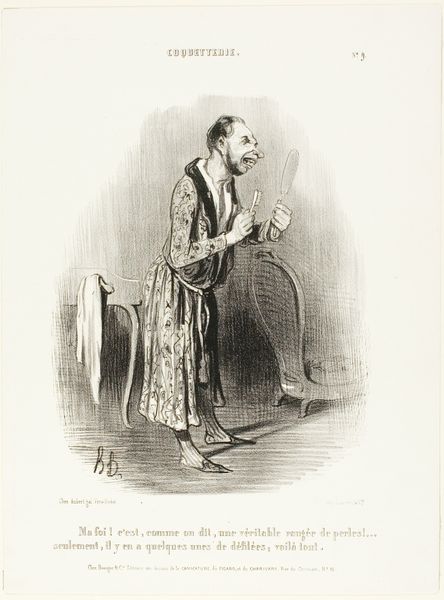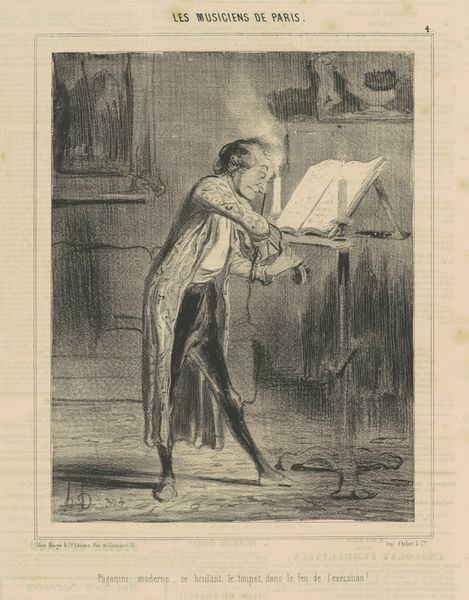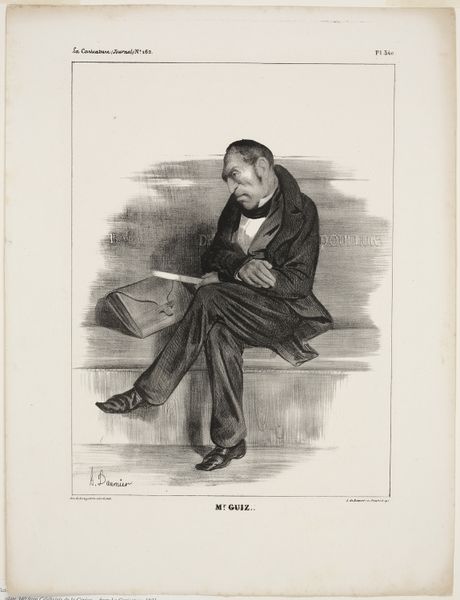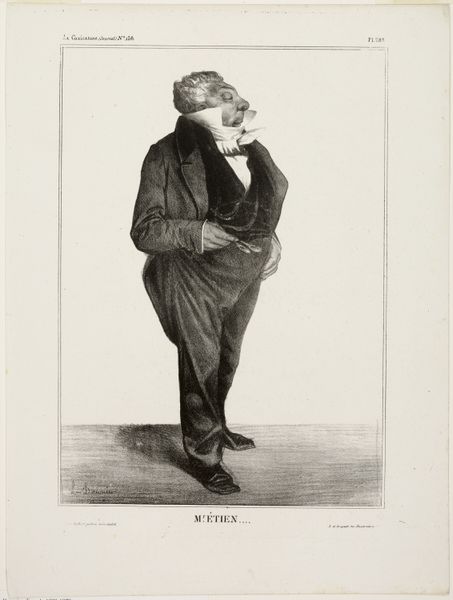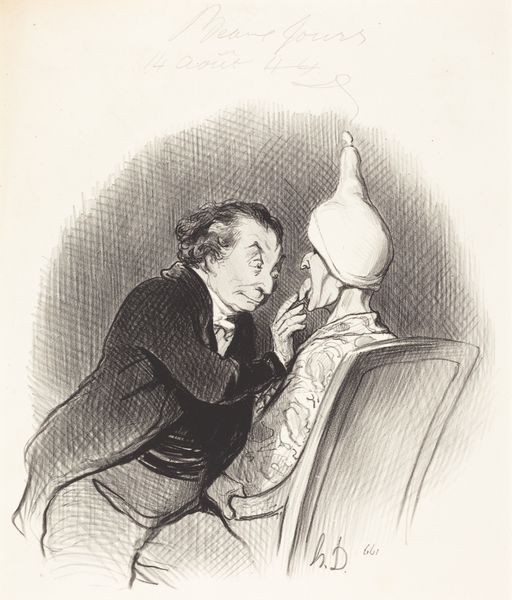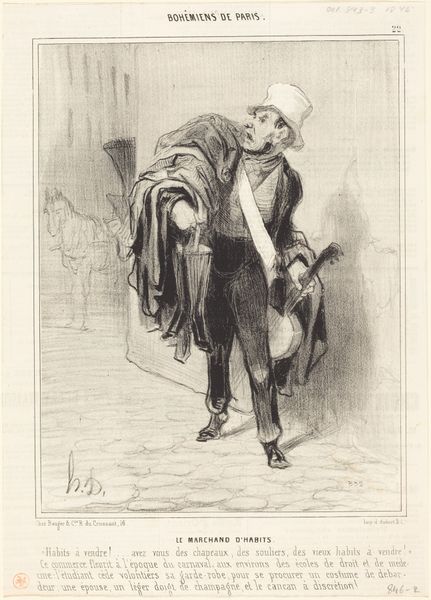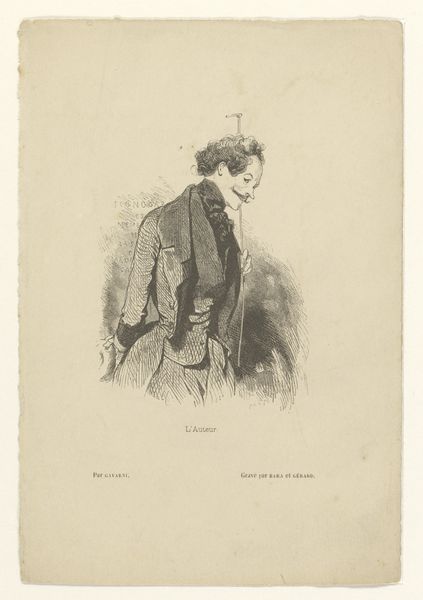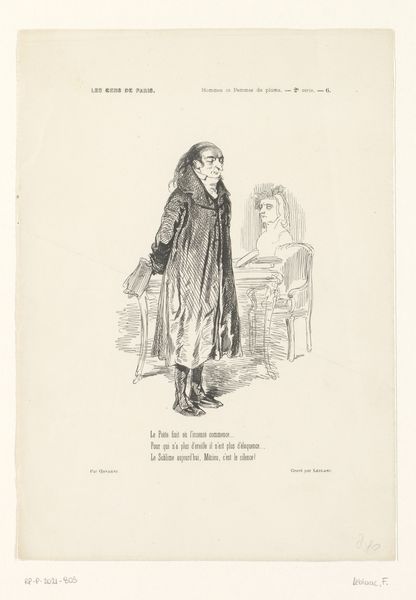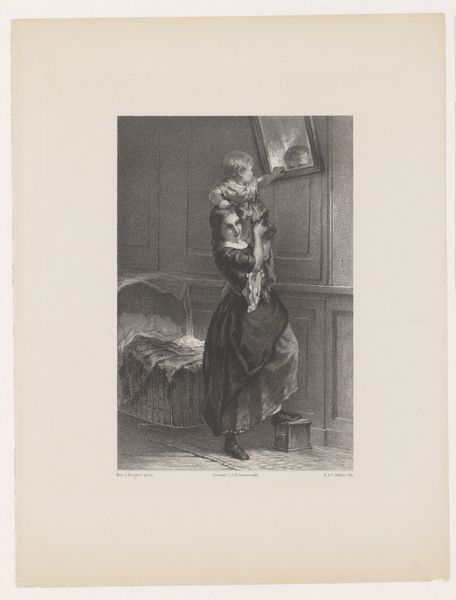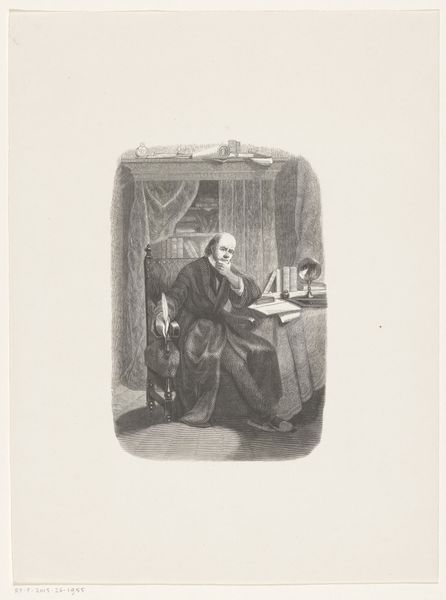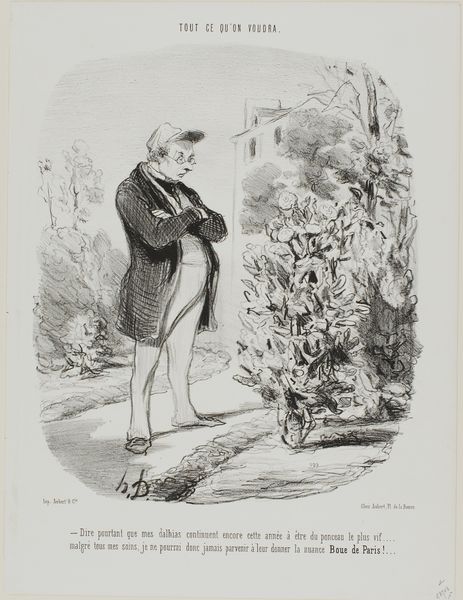
drawing, lithograph, print, ink
#
portrait
#
drawing
#
lithograph
# print
#
caricature
#
caricature
#
ink
#
romanticism
#
portrait drawing
Copyright: National Gallery of Art: CC0 1.0
Editor: Here we have Honoré Daumier's 1844 lithograph, "O plaisir de l'opium que tu me ravis!..." or "Oh, pleasure of opium that you ravish me!...". It's a stark, almost unnerving image of a woman smoking opium. How do you interpret this work? Curator: It's a powerful piece. Daumier created this during a time when opium use was becoming more visible, especially amongst certain bohemian circles. But his caricature, especially given the caption, isn't necessarily glorifying it. He seems to be exploring a particular tension: the perceived exotic allure of opium versus the potentially destructive effects on an individual, particularly a woman. Editor: Destructive effects? In what way? Curator: Well, consider the context. Daumier was working in a society grappling with anxieties around female autonomy and control. The opium pipe here can be viewed as a symbol of that loss of control. Look at the woman’s hunched posture and almost scowling expression. Is this really "pleasure"? Or is it something far more complicated, tied to social expectations and personal struggles? The Romantic era had very rigid standards on how a woman was to behave, and using Opium flew right in the face of it. Editor: I see what you mean. It’s not just about the opium itself, but about societal pressures and gender roles at the time. So, is Daumier critiquing the romanticism surrounding opium use, or perhaps even commenting on the limited options available to women in that era? Curator: Precisely! His use of caricature exaggerates her features, making her almost grotesque. That challenges any romanticized view. This could also be an indirect critique of the patriarchal structures that confined women, perhaps driving some to seek escape, even if temporary and ultimately harmful, through substances like opium. Daumier leaves the interpretation open-ended. Editor: This completely changes how I see the print. I was so focused on the surface image of someone enjoying opium, that I missed the underlying commentary about society, gender, and control. Curator: Exactly. Art becomes so much more compelling when viewed through the lens of social history and power dynamics. We have to remember, Daumier was a major social justice figure, as much as a master printer!
Comments
No comments
Be the first to comment and join the conversation on the ultimate creative platform.
